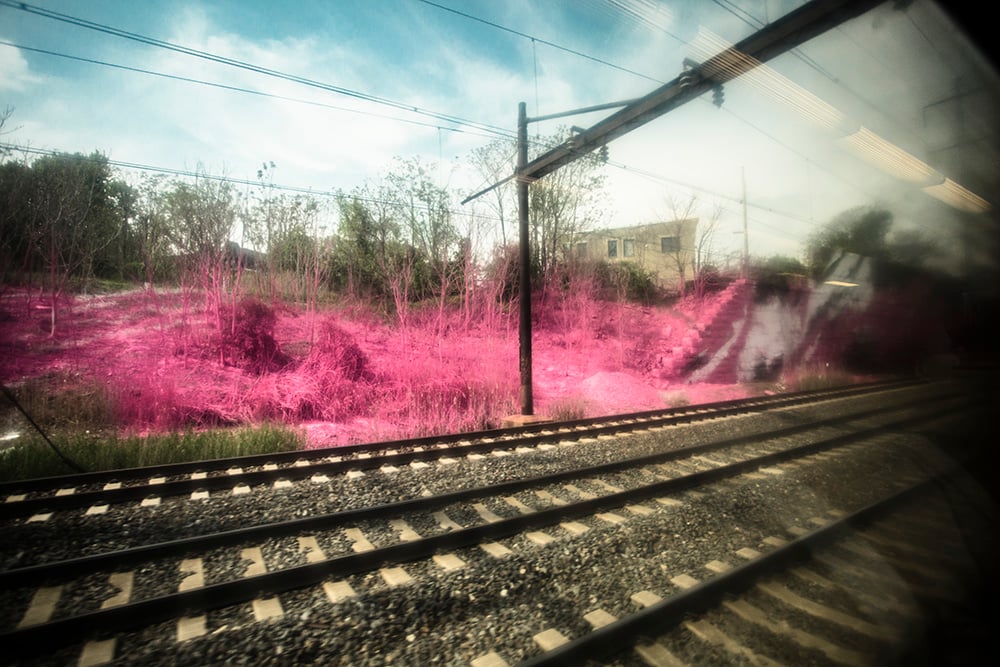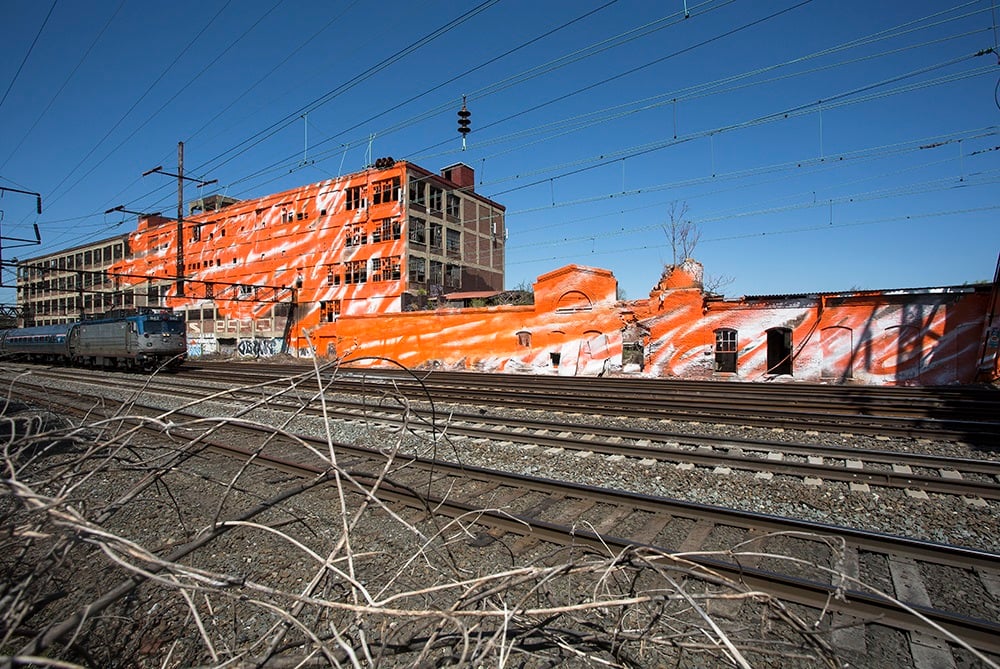Art & Exhibitions
Amtrak Lines Northeast Corridor With Katharina Grosse Artwork


Sarah Cascone

High speed rail commuters traveling between New York and Philadelphia—34,000 of them every day—have a new reason to put away their laptops and look out the window: Katharina Grosse has transformed Amtrak’s Northeast rail corridor into her newest work of art, reports the Wall Street Journal.
The initiative is part of the company’s efforts to patronize the arts, and has been commissioned in conjunction with the 30-year-old City of Philadelphia Mural Arts Program, known for its successful graffiti abatement efforts. Enlisting Grosse is a bold move for the Mural Arts program, which has in the past leaned toward more traditional, representational pieces.
The Berlin-based artist in known for her embrace of unusual canvases and for working with spray guns, rather than brushes. Her Amtrak piece, a seven-part mural titled psychylustro, is meant to be viewed from inside a moving train.
Grosse has created the mural designs, and trained a team of eight artists from Philadelphia and Berlin to carry out her vision for her with her signature industrial spray gun, often using a cherry picker to paint the upper reaches of the buildings.
The first site, an abandoned garment factory in North Philly, was previously marked with years of accumulated graffiti. Grosse began with a coat of non-toxic white white house paint before overlaying bold strokes of neon orange paint. Buildings are not the only objects transformed by Grosses’s project: bridges, track-side plant life, and chain link fences have also received brightly colored coats of paint.

Katharina Grosse, psychylustro (2014), one of seven sites along Amtrak’s Northeast corridor transformed by the artist. Photo: Steve Weinik, courtesy the City of Philadelphia Mural Arts Program.
“There are some things that we can do better than other competing modes of transport,” Amtrak vice president Stephen Gardner told the WSJ. “That is to provide the traveler with a deeper engagement with the diverse landscape.”
Curator Liz Thomas described the pieces as “an experience that asks people to think about this space that they hurdle through every day” in an interview with the Atlantic. She hopes passengers will find psychylustro “a beautiful disruption into a daily routine.”
The installation process, a dangerous task that requires constant vigilance for oncoming trains, is scheduled to be completed tomorrow. The finished work will be subject to the elements (Grosse used house paint, without any sealants), not to mention intrepid graffiti artists who may very well wish to reclaim the corridor with tags of their own.
Accordingly, psychylustro could last for years, but it could also be vandalized within weeks or even days. The Mural Arts Program and the City of Philadelphia’s Graffiti Abatement Team have agreed to protect and maintain the murals, but only for the first six months.
Grosse, for her part, is unconcerned, telling the WSJ, “I don’t care. Raphael’s frescoes in the Vatican were also painted over. We are in good company there.”
The project, which cost $291,978, is funded by Amtrak, a number of foundations, and the National Endowment for the Arts.